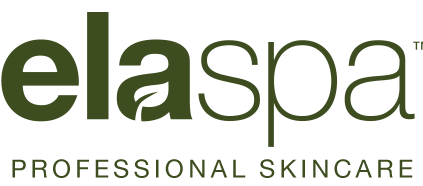
How to take care of acne
Acne commonly known as acne vulgaris is present in about 80% of people between the ages of 11 and 30 and 20-30% of individuals aged 20-40 so it’s a very common and hard to deal with condition that affects almost everyone at some point in their life.
Main 4 causes of acne include: excessive follicular keratinization and sebum production, presence of bacteria especially Propionibacterium acne and inflammation. All those factors result in a development of an obstructed sebaceous follicle called a microcomedone that leads to inflammation and acne lesions formation. Sometimes other factors contribute to acne as well, for example hormonal changes, excessive sun exposure or not washing your face properly.
So how to deal with acne? We need to think in terms of preventing acne rather than treating it so eliminating those factors would be the first step to a healthy glowing skin. We should use products aiming at regulation of sebum production and keratinization level, eliminating Propionibacterium acne with antibacterial and anti-inflammatory agents. It’s crucial to restore the skin’s natural balance and to bring it back to being healthy and beautiful rather than to mask the symptoms with products that over dry the skin. Over drying the skin will backfire, resulting in even more sebum production as the skin will try to overcompensate the loss of oil.
Use mild cleaning products that don’t dry out the skin like soap-free products with a slightly acidic pH (around 5) for example 100% natural elaspa optimal facial cleanser that utilizes natural saponins. It’s gentle for the skin, doesn’t disturb the natural lipid coat but gets the job done!
Remember to exfoliate regularly to remove that excess dead skin cells that like to get clogged in our pores. If you have moderate to severe acne, do not use a Clarisonic or any facial scrub. This can irritate inflamed acne and spread bacteria. Use enzymatic peels instead e.g. elaspa peeling gel containing bromelain from pineapple and grapefruit twice a week. Never use it on a broken skin so if you have active acne lesions omit them when applying the peel and treat them with a product prescribed by your doctor. Never pop them as it will result in spreading the bacteria to other regions of the skin and more acne.
AHA, BHA and PHA acids can aid in normalizing the keratinization process resulting in a smoother skin and a smaller pore size. If you tend to have a sensitive skin prone to irritation lean towards the PHA acids like lactobionic acid which bigger molecule size will cause less sensitivity e.g. elaspa lactobionic acid cream forte. Lactobionic acid is known to increase cellular turnover, ensuring that dead skin cells do not build up on the surface of the skin, as well as reducing the appearance of scarring and highly pigmented areas caused by over exposure to UV rays. It also has the ability to attract and retain moisture within the skin. It’s a win- win for the skin.
Always use moisturizers and serums that are designated for an oily and/or acne prone skin e.g. elaspa oil control cream forte and serum or clear and pure cream and serum. They contain ingredients like perilla seed oil, Tasman pepper, zinc PCA, shikimic acid, azeloglicin, jasmine, mandarin, green tea and chia seed extracts that will rebalance your skin instead of drying it out. Using wrong products for your skin type can do a number on your complexion.
It’s also very important what food we are feeding our body so limit your dairy and sugar intake. Too much dairy can cause oil glands to kick into high gear. Sugar is guilty because it spikes your insulin, which in turn revs your hormones and the adrenal glands. So keep the sugar to one day a week and don’t eat too much of it. Add turmeric to your diet. It has anti-inflammatory, antimicrobial and antiseptic properties that will reduce the redness and inflammation. Eat more carrots as vitamin A strengthens the protective tissue of the skin and helps to prevent acne as well as it reduces sebum production.
Exercise is a must! Sweat detoxifies the skin and studies find that those who work out at least 3 days a week are more likely to choose healthier foods.
If you are following all the rules and still fighting adult acne visit your ND, family physician, dermatologist as there might be some underlying hormonal issues at play.
And don’t forget to smile – it brings those stress hormone levels down and that is always a good thing. ☺

